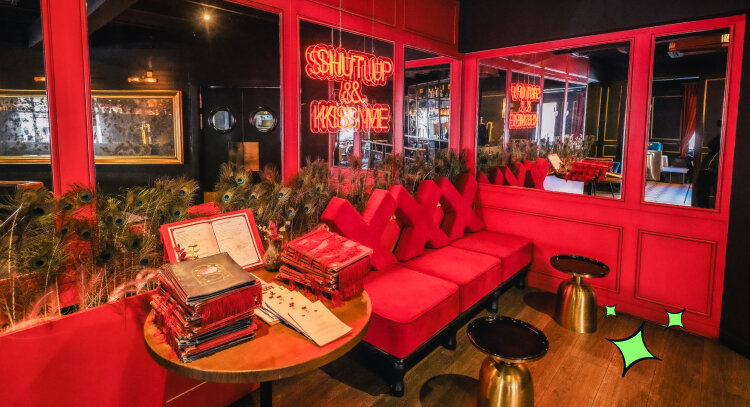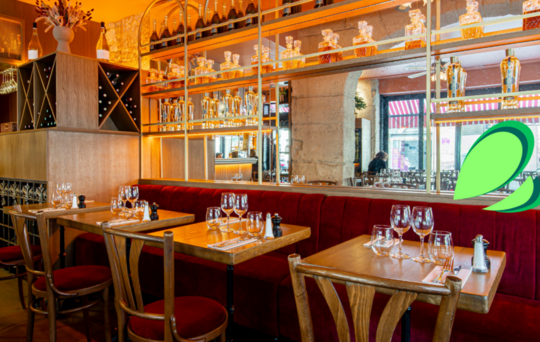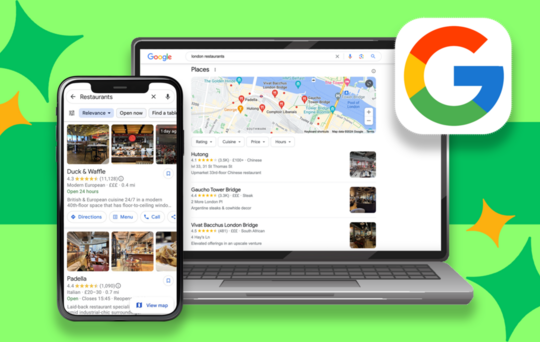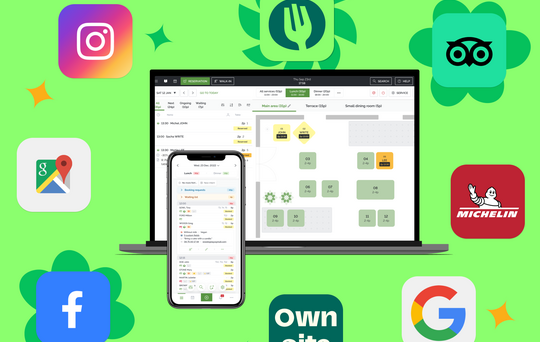Conquering the challenges of multi-site restaurant management

- • Understanding the multi-site restaurant landscape in the UK
- • Try TheFork Manager today
- • Key challenges faced by multi-site operators
- • Strategies for effective restaurant group management
- • Financial management for multi-site restaurants
- • Marketing and branding for multi-site restaurants
- • Ready to simplify multi-site restaurant management?
- • Empty tables and ever-increasing costs?
Running a restaurant is no walk in the park—but running multiple restaurants? That takes things to an entirely different level.
Multi-site restaurant management refers to overseeing multiple locations of a single restaurant brand or concept, from ensuring operational consistency to maintaining an exceptional customer experience at each site.
Whether it’s a growing chain of local favourites or a well-established global franchise, the task of managing multiple sites comes with unique challenges. From maintaining quality across locations to coordinating teams and systems, it’s a complex balancing act—but one that can be easily mastered with the right approach.
Understanding the multi-site restaurant landscape in the UK
The UK’s multi-site restaurant scene involves a mix of chain restaurants, franchises, and restaurant groups—each with its own dynamics. Here’s a quick breakdown of the nuances of different types of multi-site restaurants.
-
Chain restaurants: Company-owned and operated, ensuring tight control over branding, menu decisions, and operations. Think Nando’s or Wagamama: every location follows the same playbook leading to a consistent customer experience.
-
Franchises: Operate under a licensing model, where individual owners run locations following the franchisor’s guidelines allowing for rapid expansion.
-
Restaurant groups: Encompass a collection of distinct brands under one umbrella. While the brands may share resources or infrastructure, they often have unique concepts, menus, and vibes, adding a layer of complexity when it comes to managing them.
In the UK, these differing models face various challenges. Tight regulations on food safety, employment laws, and sustainability goals require a sharp focus on compliance. Additionally, UK diners bring their own expectations to the table, from a love of quality and value to an increasing appetite for locally sourced ingredients and plant-based options.
On the bright side, this market also presents massive opportunities—particularly for brands that are capable of flexibly adapting to evolving consumer trends.
Try TheFork Manager today
Key challenges faced by multi-site operators
Restaurant group management comes with complex challenges that require careful planning and execution. Don’t worry, we’ve got you covered. Here are the most important aspects to consider.
-
Balancing time and attention across locations
Multi-site restaurant operators need to ensure each site runs smoothly while avoiding micromanagement. Effective delegation, strong leadership at each site, and clear performance metrics are crucial for maintaining oversight without being stretched too thin.
-
Maintaining consistency
Consistency plays an essential role in gaining and maintaining customer trust. Each location must deliver the same quality of food, standards of service, and atmosphere.
This requires restaurant groups to implement clear operational guidelines, regular quality checks, and systems to address local differences while maintaining a cohesive and consistent brand identity.
-
Managing staff effectively across multiple sites
With teams spread across various locations, ensuring proper training, communication, and retention can be tricky. Operators need strategies for consistent staff onboarding, ongoing development, and maintaining engagement to reduce employee turnover and foster a positive work environment.
-
Controlling costs and maximising profitability in a competitive market
Rising costs and industry competition make efficient operations a priority. Multi-site restaurant operators need to focus on optimising supply chain management, reducing waste, and leveraging economies of scale while still remaining responsive to market trends and shifting customer preferences.
Strategies for effective restaurant group management
Successfully managing multiple restaurant locations requires a combination of effective structure, technology, and leadership. Here are some practical strategies to help streamline your operations and maintain high standards across all sites.
-
Develop clear standard operating procedures (SOPs)
Consistency starts with well-documented SOPs that cover all key processes, from food preparation to customer service and cleanliness standards. These guidelines serve as a reference point for team members across establishments, ensuring that no matter the location, staff know what is required of them and customers get the same great experience.
-
Leverage technology
Modern restaurant technology can be a game-changer when it comes to multi-site restaurant management. Point-of-sale (POS) systems, inventory management tools, and employee scheduling software are just some of the solutions that can help automate tasks and provide real-time insights to help you optimise processes.
-
Build a strong leadership pipeline
Invest in leadership training to ensure managers are well-equipped to handle expected and unexpected day-to-day challenges. Giving them ownership over their sites fosters accountability and creates a sense of pride in the brand’s success.
-
Implement effective communication strategies
Clear and consistent communication between the head office and individual locations is critical. Ensure you implement regular check-ins, group meetings, and shared platforms to keep everyone aligned on goals and informed about updates. It’s all about ensuring various locations feel connected to the bigger picture.
-
Use restaurant management platforms
Tools like TheFork Manager simplify front-of-house operations by streamlining reservations, optimising table rotation, facilitating customer engagement, and much more. These platforms drive visibility and improve customer satisfaction while reducing the workload for staff, making them a valuable asset for multi-site operators.
Financial management for multi-site restaurants
Strong financial management is vital to keeping multi-site restaurants profitable and sustainable. Here are some practical tips for staying on top of the numbers.
-
Create a robust budget and forecasting process
Develop a detailed budget for each location, considering specific costs and revenue projections. Regularly update forecasts to adapt to seasonal trends, market changes, and unexpected expenses.
-
Negotiate favourable supplier contracts
Investing time and effort into building supplier relationships can help you to secure bulk purchasing discounts and terms. Strong supplier relationships can help you manage costs without sacrificing quality.
-
Optimise pricing strategies
What works in a bustling city centre may not suit a suburban area, so be sure to tailor your pricing strategies to the local market. To do this, analyse customer preferences and competitor pricing to strike the right balance.
-
Monitor key performance indicators (KPIs)
In the restaurant business, tracking KPIs is a must. Keep an eye on KPIs like labour costs, food cost percentage, and revenue per table across all locations. You can then use this data to identify underperforming sites and take corrective actions quickly.
Marketing and branding for multi-site restaurants
Standing out in a competitive market is key to the success of multi-site restaurants. But where to start? Here are some effective marketing and communication strategies to boost visibility and customer engagement.
-
Develop a consistent brand identity
Ensure all locations reflect the same core branding—logos, menus, décor, and messaging. Consistency builds trust and recognition, making customers feel connected to your brand, regardless of which location they visit.
-
Leverage local marketing opportunities
When it comes to group restaurant management, it’s a good idea to adapt your marketing to suit the unique demographics and culture of each location. To do this, consider partnering with local events, charities, or food influencers to build relationships within the community, spread the word, and attract nearby diners.
-
Use online marketing strategies
Ensuring your business is online is vital to success as a multi-site restaurant. Optimise your website, engage with customers on social media, and list your restaurants on platforms like TheFork to increase your visibility.
Having an established online presence is essential for reaching a broader audience and staying top-of-mind for customers looking for their next dining experience. Plus, when TheFork diners are 2x more likely to dine out at restaurants compared to the average customer—why wouldn’t you use it to your advantage?
-
Create customer loyalty programmes
Reward repeat diners with loyalty schemes like point collections. For example, TheFork’s Yums loyalty programme allows customers to earn points with each visit, encouraging them to return and driving long-term engagement. What’s more, UK diners can now earn twice the amount of Yums with the Double Yums program—enhancing your restaurant’s visibility and providing your customers with even more of a reason to keep coming back!
A strong, multi-layered marketing strategy ensures your brand resonates across locations while staying relevant to local communities.
Ready to simplify multi-site restaurant management?
Managing multiple restaurant locations doesn’t have to be overwhelming. TheFork Manager can help streamline your operations, boost your visibility, and enhance the customer experience across all your sites.
Want to find out more? Get in touch today to find out more about how TheFork Manager can help take the stress out of multi-site restaurant management.
Empty tables and ever-increasing costs?
- Understanding the multi-site restaurant landscape in the UK
- Try TheFork Manager today
- Key challenges faced by multi-site operators
- Strategies for effective restaurant group management
- Financial management for multi-site restaurants
- Marketing and branding for multi-site restaurants
- Ready to simplify multi-site restaurant management?
- Empty tables and ever-increasing costs?














